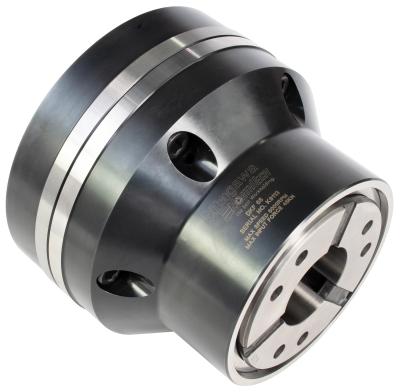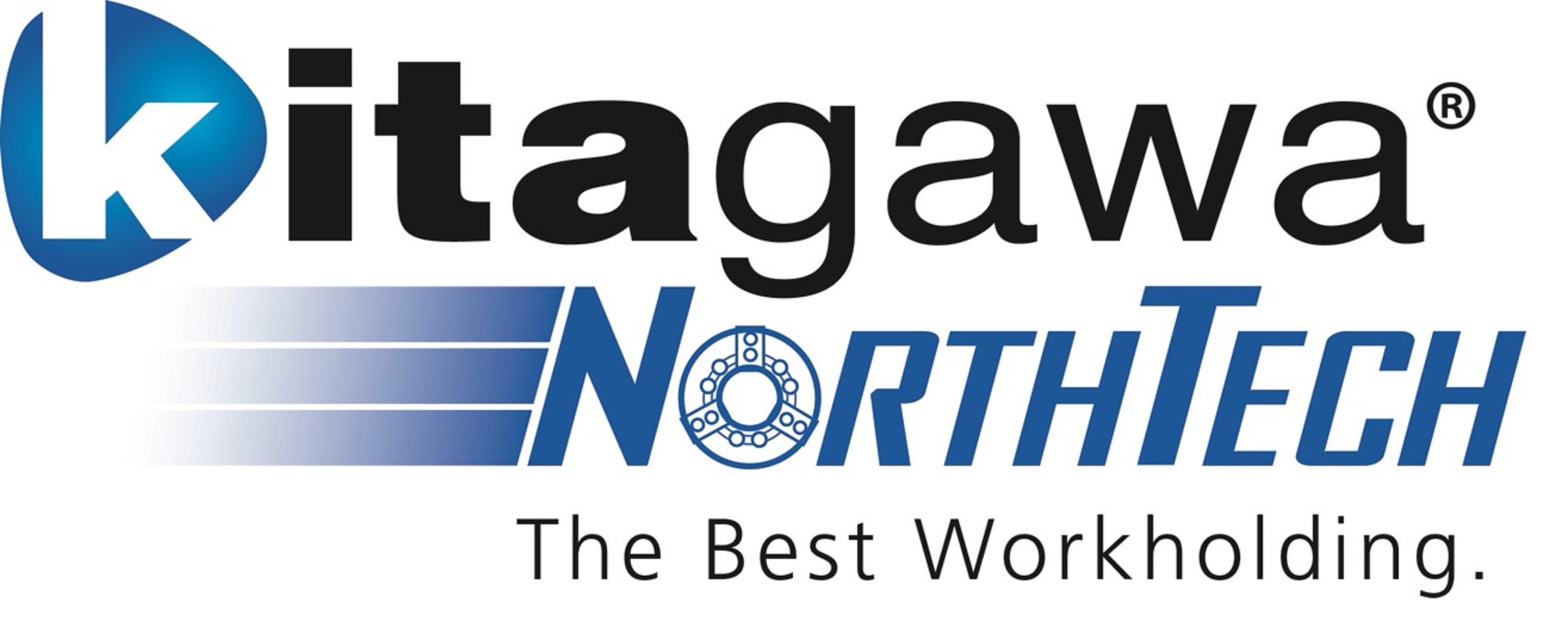
Kitagawa NorthTech Inc. introduces its new DKF series of low-profile collet chucks. The DKF low-profile collet chuck features a compact nose, which is required when additional tool clearance is needed in tight workpiece and machining environments.
Designed with a fixed actuation system, the DKF quick-change compact collet chucks are engineered for first and second operation machining. The fixed-length collet chuck from Kitagawa NorthTech is designed for bar machining applications and are suitable for DC Varibore collet types with gripping ranges from 4mm to 65mm. Finally, with its quick-change collet chuck tool, the DKF series collect chuck promises easy changes within 10 seconds.
The DKF series low-profile, quick-change collet chucks are provided with mounting bolts and a custom-machined drawtube connector allowing you to start using it straight out of the box. Collet chucks mount directly to the lathe spindle or use a precision adaptor plate to ensure a consistent mounting without the need for correction. The precision fit of the Kitagawa NorthTech’s DKF collet chuck enhances the rigidity of the overall system. The need for adjustment is minimal, meaning less machine downtime. All the collet chuck bodies are case hardened, optimizing the rigidity, strength and durability.
Shawn Luschei, vice president of sales, states, “As an engineered Kitagawa branded Workholding product, customers will get the same superior performance, reliability and longevity they’ve come to rely on and expect from our power chucks, with our new DKF series of low-profile collet chucks for applications with small workpiece envelopes and congested machining environments.”
Contact Details
Related Glossary Terms
- chuck
chuck
Workholding device that affixes to a mill, lathe or drill-press spindle. It holds a tool or workpiece by one end, allowing it to be rotated. May also be fitted to the machine table to hold a workpiece. Two or more adjustable jaws actually hold the tool or part. May be actuated manually, pneumatically, hydraulically or electrically. See collet.
- clearance
clearance
Space provided behind a tool’s land or relief to prevent rubbing and subsequent premature deterioration of the tool. See land; relief.
- collet
collet
Flexible-sided device that secures a tool or workpiece. Similar in function to a chuck, but can accommodate only a narrow size range. Typically provides greater gripping force and precision than a chuck. See chuck.
- lathe
lathe
Turning machine capable of sawing, milling, grinding, gear-cutting, drilling, reaming, boring, threading, facing, chamfering, grooving, knurling, spinning, parting, necking, taper-cutting, and cam- and eccentric-cutting, as well as step- and straight-turning. Comes in a variety of forms, ranging from manual to semiautomatic to fully automatic, with major types being engine lathes, turning and contouring lathes, turret lathes and numerical-control lathes. The engine lathe consists of a headstock and spindle, tailstock, bed, carriage (complete with apron) and cross slides. Features include gear- (speed) and feed-selector levers, toolpost, compound rest, lead screw and reversing lead screw, threading dial and rapid-traverse lever. Special lathe types include through-the-spindle, camshaft and crankshaft, brake drum and rotor, spinning and gun-barrel machines. Toolroom and bench lathes are used for precision work; the former for tool-and-die work and similar tasks, the latter for small workpieces (instruments, watches), normally without a power feed. Models are typically designated according to their “swing,” or the largest-diameter workpiece that can be rotated; bed length, or the distance between centers; and horsepower generated. See turning machine.

